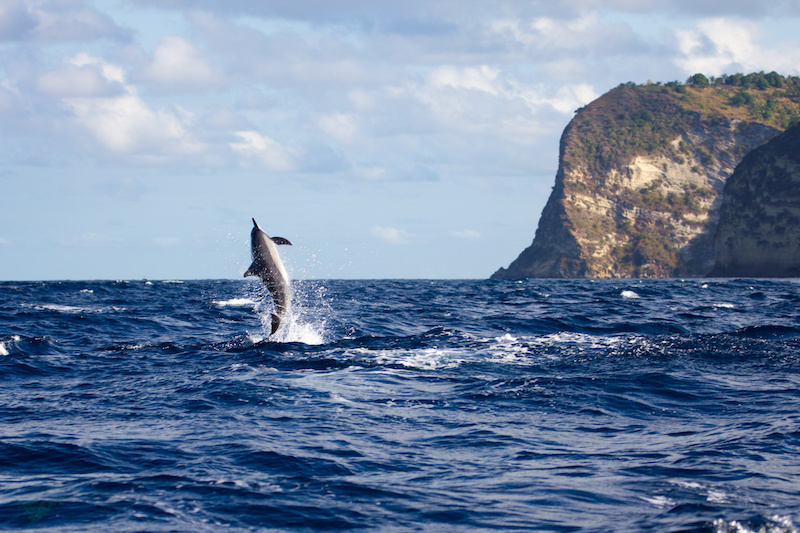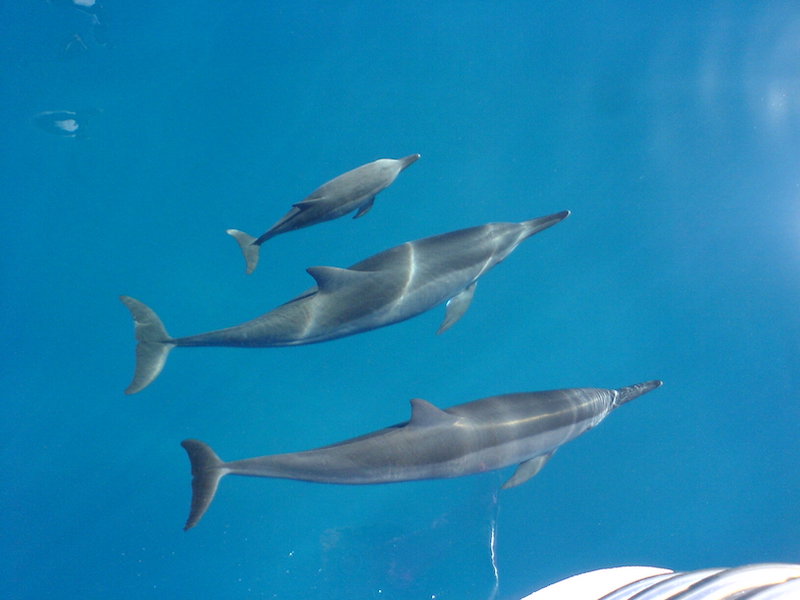
Dive into the fascinating world of the long-beaked dolphin, an elegant and agile marine mammal thriving in the warm waters of the Caribbean. This article takes you on a journey to discover this extraordinary creature, unveiling its life secrets, from the unique architecture of its body to its feeding habits, natural habitat, and reproductive process. Get ready to be amazed by this distinctive dolphin.
Characteristics of the Long-Beaked Dolphin
The long-beaked dolphin, scientifically known as Stenella longirostris, is a member of the Delphinidae family, which includes dolphins and orcas. This marine mammal is characterized by a sleek and muscular body with a long, slender beak. It also has a prominent dorsal fin, which can be either triangular or falcate, along with pointed pectoral and caudal fins.
In terms of size, the long-beaked dolphin has a length ranging from 1.3 to 2.4 meters and a weight between 55 and 80 kg, although these measurements may slightly vary based on their specific geographic location. Regarding its lifespan, this dolphin can live between 20 and 26 years, which is considered a quite remarkable lifespan for a marine mammal.

Habitat of the Long-Beaked Dolphin
The long-beaked dolphin, a remarkable species among marine mammals, primarily inhabits tropical and subtropical waters. This preferred habitat is characterized by warm temperatures, providing an ideal environment for the dolphin. During the day, these dolphins are often found near the coasts, in lagoons and shallow bays, where they rest and interact within their group. Their behavior changes at nightfall when they venture offshore to feed. This daily migration is crucial for their survival, allowing them access to food-rich areas.
Their presence serves as an indicator of the health of marine ecosystems, as they play a significant role in the food chain. However, their habitat is threatened by various factors, including pollution, maritime traffic, and fishing activities, underscoring the importance of marine conservation to ensure their survival.
Reproduction in the Long-Beaked Dolphin
The reproduction of the long-beaked dolphin is a fascinating and vital process for the species’ continuity. These dolphins reach sexual maturity between 4 and 10 years, an interval that varies depending on gender and environment. The gestation period lasts approximately 10 to 11 months, after which the female gives birth to a single calf. Births tend to concentrate between June and September, a period when environmental conditions are most favorable.
After birth, the young dolphin remains closely attached to its mother, who nurses it and teaches essential survival skills. This nursing period can last from 2 to 8 months. Long-beaked dolphins are known for their complex social behavior, which plays a crucial role in the reproductive process and the education of the young. Reproduction is a key moment in their life cycle, essential for the preservation of the species.

Diet of the Long-Beaked Dolphin
The diet of the long-beaked dolphin is adapted to its aquatic environment, playing a crucial role in the marine ecosystem. As a carnivore, it primarily feeds on small pelagic fish, squid, and crustaceans, hunting them in tropical and subtropical waters. These dolphins have developed efficient hunting techniques, often in groups, to capture their prey. Their diet varies depending on the availability of resources in their habitat.
At night, they dive into the ocean depths, sometimes up to 200 meters, to find prey rising from the deep sea. Their ability to adapt to different types of prey and various depths demonstrates their agility and intelligence. Their diet not only influences their health and survival but also contributes to the balance of fish populations and the maintenance of marine biodiversity.
Discover all cetacean species that can be found near the coasts of Martinique: